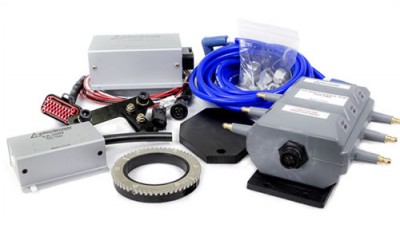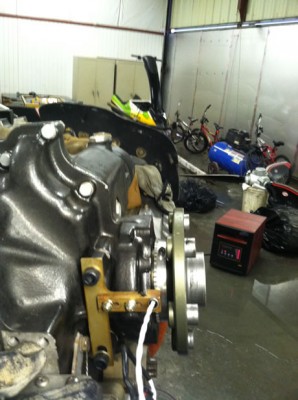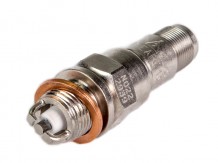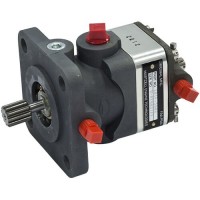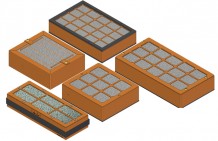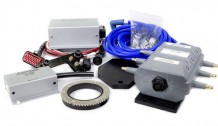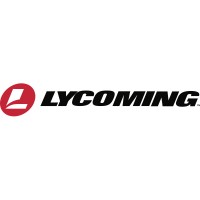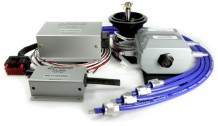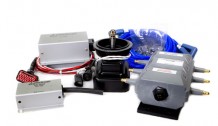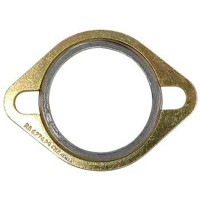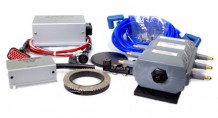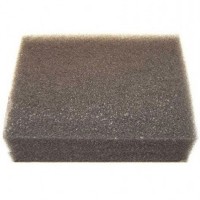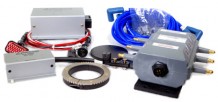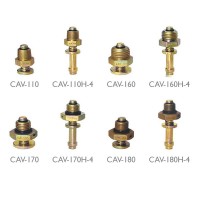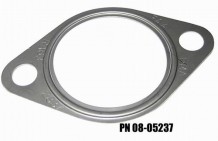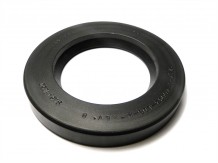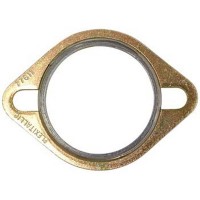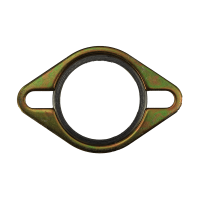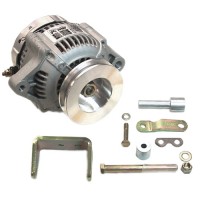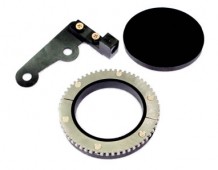1-877-795-2278 | info@aircraftspruce.ca
Aircraft Spruce Canada
Brantford, ON Canada
Corona, CA | Peachtree City, GA
Chicago, IL | Wasilla, AK
Aircraft Spruce Canada
Brantford, ON Canada
Corona, CA | Peachtree City, GA
Chicago, IL | Wasilla, AK
THE AVIATION SUPERSTORE FOR ALL YOUR AIRCRAFT & PILOT NEEDS | 877-795-2278
Electroair EIS-61000-5C Continental 6 Cylinder Electronic Ignition Kit
$5701.00/Each
Part# 08-13760
MFR Model# EIS-61000-5C
MFR Model# EIS-61000-5C
Overview
|
The EIS-61000 Electronic Ignition Kit is a fully STC'd kit for Lycoming 540 series, non-turbo’d, series engines, installed on single engine aircraft. Replacing one magneto with the EIS-61000 will typically improve fuel economy on average by 10-15% (operators have reported consistent fuel savings of 1.5-2.0 gph or greater). Additionally, there will be an improvement in horsepower, smoother engine operation, easier hot starts and improved high altitude performance. The EIS-61000 adjusts spark timing automatically by way of our MAP Sensor - timing is adjusted with altitude. Most parts on the EIS-61000 are not life limited (reference the I.C.A. for recommended maintenance) - this combined with reduced spark plug fouling means lower maintenance costs. This kit can be used on either 12V or 24V systems. This kit uses a Crank Shaft Trigger Wheel for firing the ignition system. The trigger wheel is mounted on the bare crankshaft just behind the prop flange. NOTE: Specify whether or not this is an O/IO-540 or AEIO-540 engine. Kit includes: all the required parts to replace one magneto. (Please refer to the eligibility schedule to verify the system can be installed on your engine - Note: aircraft and engines are being added regularly). |
Spark Plug Discussion
Spark Plug DiscussionThe installation manual specifies the recommended gap for the engine application. This gap will be larger than a typical aircraft plug gap because of the higher energy output from the EIS. This is perfectly acceptable with the EIS ignition charging method, since the high load of the cylinder pressure will allow the voltage to be quite high at the electrode; the gap will keep the plug from seeing an over-voltage situation.
The EIS system uses an inductive long duration charging method for the coils. Electroair’s experience has drawn us to the following guidelines for spark plug selection:
- Select aircraft spark plugs will work with the EIS. For Lycoming engines, Electroair has found that the REM37BY (or equivalent) plugs work the best because they are easier to gap to the range required and fit the broadest heat range recommended by the engine manufacturers. (Fine wire plugs are also an excellent choice for Lycoming engines). For Continental Engines requiring long reach spark plugs, off-the-shelf fine wire spark plugs will generally be the easiest to adjust the gap. Electroair strongly recommends verifying the heat range for the engine and using the appropriate plugs.
- Electroair manufactures aviation spark plugs that are gapped at the factory to Electroair’s recommended wide gap of 0.036 inches. Electroair manufactures both massive electrode and fine wire spark plugs for various applications. The spark plug information can be found on the Electroair website. Electroair spark plugs have been FAA approved for use with Electroair’s certified EIS-61000 ignition systems. These plugs are only approved for use with Electroair’s EIS. Electroair spark plugs should not be used with magnetos.
Testimonials
Testimonials:Bob & Michael,
I wanted to write and let you both know how impressed I am with the improvements in our '67 Cessna 206. We added the EIS-61000 at the last annual inspection in the Spring of 2014.
Hot starts are a thing of the past! I never thought that an IO-520 would start this easy and run this smooth. The difference is noticeable in all phases of engine operation but are most notable on the ground and at high altitudes.
The quick and smooth acceleration on take-off is a thing of beauty. I operate out of marginal bush strips, most with no options for go-around or aborted take-offs. My climb rate has improved and my ground roll has certainly decreased. I must say, I have a lot more confidence in the engine performance.
Perhaps the biggest advantage I have realized has been in the fuel consumption. Many of my trips required stopping in remote villages, not always along my route, to purchase $10-$15/gal fuel. Now I am able to make most of those trips flying direct because of the 1.5-2.5 GPH (depending on power settings and altitude) fuel savings. On other flights I am able to carry less fuel and more payload due to the reduced fuel burn.
By my calculations the total cost of the upgrade will easily be meet within 18 months, simply from fuel savings. You have a great product! I am now saving for an additional system for ourO-540 equipped Maule.
Blue Skies and Tailwinds,
Adam White
Jay B. - RV-7A,
I have an ECI IO-375 in my RV-7A. I used to run two slick mags, now I have an impulse slick in the left hole running the upper plugs, and your system in the right hole running automotive plugs in the bottom. I am quite happy with your system after flying it 1.5 hours. The engine might run a bit smoother, ( it was already in good tune) and I picked up 10 mph at my economy cruise setting of 7.0 gph LOP.
Andy B.,
From our customer Andy B. out of the Cincinnati area, who recently installed one of our systems on his 35-33 Debonair, he reports the following: F33 Bonanza with an IO-470KHe has a regular trip from Cincinnati to Destin, FL (approx 4.5 hours). Normally, he would see 145knots TAS and burn 12.5gph (8-9,000ft); now, on a recent trip, he was seeing 150knot TAS and was burning 11.1gph (11,000ft). Andy is also reporting that Hot Starts are much easier (uses the same procedure now as a cold, or normal start). And he is seeing 1gph less when he is at idle. Thanks for the report Andy!
Mike Kobylik at Electroair Ignition Systems was extremely helpful in resolving my issues with a rough running engine on my experimental Seawind airplane (IO-540). I had several phone conversations with Mike concerning the roughness and large rpm drop with the ignition check. Mike's tenacity in delving in to the issue was impressive. He is courteous, professional, and willing to pull out all the steps to get the problem resolved.Many thanks to you, Mike.
David Eastis, Roswell, Ga
Mike,
Here are some recent shots of my 68 185 out on some Alaskan adventures. I just put the EIS-61000 Electronic Ignition System on it and was very pleasantly surprised at the results. I already run economy settings (2100 RPM) typically as well as aggressively leaned at wide open throttle (An extremely efficient way to run if your set up for it) so I didn't honestly expect to achieve the full claimed efficiency gains from the Electroair system. However the engine not only feels a little stronger but I'm showing a 1-2 gals/hr less fuel burn on my digital fuel flow system at the same settings. My range is nearly 1000 miles now at over 120 knots ground speed on the 29" tires. In a word: Sweet!!
Jeff Walker
Mike,
I finally have enough data to really stake my position about your company's electronic ignition system. Let me be clear, it's terrific and I'm thrilled with it. Here's the whole story.
For years I have wanted an improved ignition system for my airplane. The Lasar Ignition from Unison was the only option for certified aircraft but it was very expensive, orphaned by Unison, and the technology it used was not optimal. I watched with envy as technology moved forward in the homebuilt community - but those of us with certified aircraft were left behind. But in the spring of 2012 I read that ElectroAir Ignition Systems of Michigan had a system STCed for certified aircraft. But there was another problem - they were only approved for single engine aircraft - not the twin I wanted to install it on. I was hoping it was only a matter of time.
I spoke with Mike of ElectroAir and he said they had a twin lined up for certification and were planning to get twins added to the STC shortly. Murphy had something to say about this. That fall Mike and I decided to use my Twin Comanche as the certification test bed. I delivered the plane to Port Huron, MI for the installation. Two weeks later I came back and did the engineering and certification test flights. Everything went perfectly and I flew home with an approved Electronic Ignition System installed. I was thrilled. But everyone wants to know - does it make a difference?
An EIS produces benefits as a result of three items: altering the timing and duration of the spark and producing a hotter spark. The timing benefits become more substantial with higher altitude and lower power settings because the timing gets advanced more and more as your power setting is reduced. The longer duration and hotter spark are in effect at all times.
I am a data junkie and my plane is well equipped with engine instrumentation: JPI EGT, CHT, digital fuel flow, and an Aspen PFD that displays true airspeed. Furthermore, I fly the plane very consistently. I always set power exactly per the POH and adjust for non-standard temperature and pressure. For years I knew that if I set 65% precisely, I would get 146 KIAS. At 9,000 feet that produced 167 knots true airspeed. This was replicated on countless flights and was a predictable as a clock.
With the ElectroAir, my 65% power cruise speed has increased from 167 KTAS to 171 KTAS. At the same time, my fuel burn has decreased from 15.2 GPH to 14.2 GPH. At my old speed of 167 KTAS, my fuel flow is 13.2 GPH - a reduction of 2 GPH (13.1%) in fuel flow. That's a savings of $12.88 per hour. Furthermore, it is exactly in line with my expectations when installing the system. I prefer to take some of the efficiency gains, give some of that fuel back to the engine, and produce more power and go faster. But the full savings is there if I want it.
I have yet to try 55% power at 11,000 MSL but the savings should be even better at that altitude and power setting.
Since installation I have operated the aircraft 132 hours with virtually no hiccups. If money talks, I have started converting the 12 aircraft in my flight school to the ElectroAir EIS.
Zeke Valtz
Horizon Aviation, Inc.
Providence, RI
Hello Michael,
It was a pleasure to meet you and other Electroair representatives at the Reno Air Races this year. And congratulations for achieving FAA acceptance of additional Electroair products!
As we discussed at the time, my dual modified Jeff Rose Electromotive system should be updated with appropriate new Electroair components. I would like to proceed with this and will place an order through your normal process. The photo is my Glasair II-S RG.
Best Regards,
Tom Taylor Hi Josh, Thanks for your time, we love our electronic ignition. We currently hold both east and westbound transcontinental flight speed records taking out Howard Hughes speed record. You can also find a few videos online you tube if you search mike and mark Patey. The video with "it's alive" in the title was of our first key on attempt of starting the 780 when we finished it with your ignition. Best first start on a new motor I have ever had.
Thanks,
Mike Patey
Orem, Utah
Mike,
Great ign system in my Rocket II . 350 HRS to date. Great factory support, really notice it in higher altitudes. Here's a recent adventure with my friend Ernst and his RV-10.
Thanks,
Bill Black
Hi Mike the aircraft has an 8 cylinder Twin turbocharged IO720 Lycoming engine with your dual electronic ignitions.,
I haven't established any accurate performance data, but I have had it to 349KIAS at 2300 feet, at 40" manifold pressure. I was checking for vibration and or flutter as I have balanced my elevators differently than the design asked for and my vertical stabilizer is taller than the original by about 10 inches.,
It stalls at 70KIAS at 4000 ft and breaks straight head if you keep the rudder centered. At 24" and 2400 rpm it cruises around 245 knots at 3000-4000ft. Higher up(8000ft) and with some power it will better 290 knots quite easily but the fuel burn is also up there in there about 27 to 28 gph! The ignitions have worked very well!,
Kind Regards,
Ron
Hi guys, just to give an update. Almost a year ago, I've installed the Electroair ignition in my 1966 Beech Musketeer with the IO-360 Lycoming. Like the sales literature says, it runs smoother. I've noticed 1GPH less fuel burn at my normal 2450rpm cruise. I have no fuel flow gauge, so I can't give exact numbers. This plane has the fixed pitch prop, and with this ignition, I've noticed more power at higher altitude airports. I've installed this system on a customer's Mooney, and he has had similar results.
Joe Ashment
The Electroair Igniton is the absolute best electronic ignition for any aircraft, anywhere, anytime!" I put one in my RV4 in 1998 and put 1300 hours on it and it's still running strong with the new owner. My current aircraft is a Harmon Rocket 2 pictured here alongside my friend Mark Culpeppers HR2. My Rocket has an electroair ignition and a Lycon modified IO-540A4B5 putting out close to 300HP at 2700 RPM. The performance is almost as much fun as the F16! Thanks for another great system!
Rob Ray
Hi Mike and Guys,
Just wanted to say thanks for great product that you and your staff back 100%. Special thanks to Josh for our custom installation, knows his stuff!
Performance!!!! Just came back from Branson, MO at 7500ft at 154true burning 9.7GPH with EGTS of 392.....that's good 1gph less and going 5kt's faster..WOW. What really fun when your just flying around for fun pulling it back to 135 to 142kts true at 8.2gpr.....not bad for certified aircraft with gross weight of 2650lbs.
Once again thanks.....will add to my next aircraft for sure!!!!!!
Chap Waters
Mike,
The pictures will come separately. I did an unexpected major on by o360 this winter when a timing gear came loose damaging the gears and the engine block. It went back together with new nickel cylinders, powerflow exhaust, and the Electroair ignition replacing my left mag/shower of sparks. I moved all of the spark plugs to the bottom for the electronic ignition and rely on this bank for startup of the battery with no problem thus far. I have also added a cowl enclosure with the rebuild but otherwise have a stock M20C.
The results have been impressive. Climb has improved by about 300fpm. My cruise speed is improved most at altitude and I can keep groundspeed at 180mph well into the 12,000 foot range and still fly at 170mph to 15,000 ft. This exceeds prior performance by about 13mph on less fuel.
I am able to lean out better and performance has the most improvement when my manifold pressure is at or below 20 at high altitudes or cruising low with partial throttle settings. I immediately realized my speed was higher on descent as the engine simply pulls harder with the spark advance that comes with partial power. As a result I am letting down with lower power settings and saving fuel.
The end result in these three modifications is best seen on a common trip I make from KOTH; North Bend Oregon to KEUL; Caldwell Idaho. Previously I made this trip on 22 gallons of fuel flying in the 13,000 foot range. Now I am using 18 gallons and getting there about 10 minutes sooner under similar conditions.
The other measure I have of performance is two similar trips I took at an altitude of 15,500 ft before and after the project. My time to run one 25 gallon tank empty before was 2.5 hours including climb. recently on a trip to Texas the tank was empty right at 3 hours; this at probably 10mph faster.
I am quite pleased my IA talked me into Electroair ignition and attribute most of the performance improvement to the ignition.
Thanks,
Doug Crane
Dear Stewart, (and Mike)
I'm writing to thank you and your staff again for your superb technical and persistent support. Customer support just doesn't get any better than the effort you made in helping and coaching me thru this recent, complex problem diagnosis. Some problems, even with exceptionally reliable electronic equipment do occasional pop-up. (In this case, a more mundane mechanical problem) And once-in-awhile one of those issues can be difficult to identify. Following logical troubleshooting, it's also logical to begin with the most probably and LEAST expensive fix. And only after exhausting the "low-lying-fruit," moving on to more complex and expensive causes. I sincerely appreciate your using that approach in my support.
I am also quite impressed with the improvements that Electroair has made in Jeff's original design. The current system is substantially more robust, and given that I'm using dual systems, I especially like the total redundancy.
Attached are a couple pictures of my Glasair IIS-RG that is flying on dual Electroair Electronic Ignitions. I took the plane for a "spin" (not literally) today, just for the pure joy of flying her again with a most smooth running engine... on either ignition, or both! What a JOY!
My highest regards and thanks to you and your entire staff,
Gene Stangel
Took my Cessna 172N (with Lycoming O-360 A4M) for a high altitude test flight yesterday with newly installed EIS 41000. Got to 15,000 at about 300 pounds under gross. OAT was 45 deg. F. so density alt. was about 17,400. Not bad! engine ran smooth, head and exhaust temps. were definitely showing timing advance was working as advertised. Nice product.
Thanks for your help!
John R. Crossen
Q&A
Please note, Aircraft Spruce Canada's personnel are not certified aircraft mechanics and can only provide general support and ideas, which should not be relied upon or implemented in lieu of consulting an A&P or other qualified technician. Aircraft Spruce Canada assumes no responsibility or liability for any issue or problem which may arise from any repair, modification or other work done from this knowledge base. Any product eligibility information provided here is based on general application guides and we recommend always referring to your specific aircraft parts manual, the parts manufacturer or consulting with a qualified mechanic.

 Aircraft Spruce Canada
Aircraft Spruce Canada
